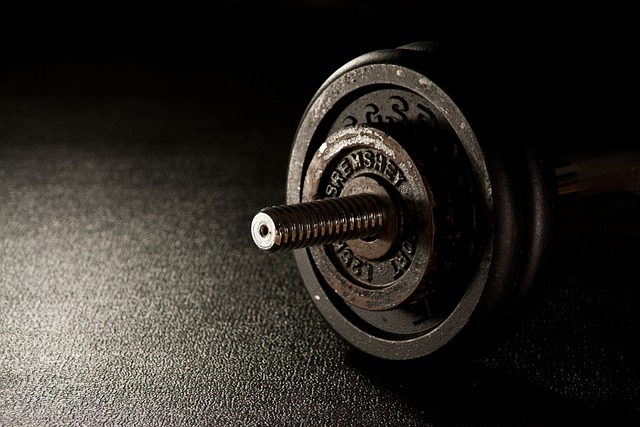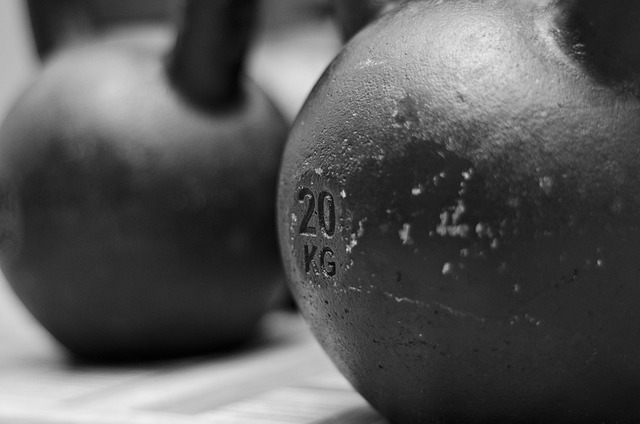Welcome to the ultimate guide to at-home strength training without equipment! With the current pandemic keeping us indoors, more and more people are turning to home workouts to stay fit and healthy. In this article, we will provide you with all the tips and information you need to effectively train your muscles without any equipment.
We understand that working out at home can be challenging, but it also comes with many benefits. Not only is it convenient and cost-effective, but it also gives you the flexibility to choose your workout time and location. Plus, you can avoid the risk of injury from heavy gym equipment. So, let’s dive in and discover the world of at-home strength training without equipment.
Benefits of At-Home Strength Training
In recent years, there has been a growing trend of people working out at home. However, due to the ongoing pandemic, working out at home has become the new normal for many individuals. With gyms closed and limited access to heavy equipment, at-home strength training without equipment has become increasingly popular. Not only is it a safer option, but it also offers a range of benefits that make it an effective and convenient way to stay fit and healthy. Convenience and Cost-effectiveness:
One of the major benefits of at-home strength training is convenience. You can workout at any time of the day without having to worry about gym opening hours or travelling to a gym. Also, there is no need to invest in expensive gym memberships or equipment. With just your body weight and a few household items, you can get a full-body workout without spending a dime. Flexibility:
Working out at home also offers great flexibility. You can choose to workout in your living room, backyard, or even in a park. This eliminates the need to commute to a gym, saving you time and money. Additionally, you can customize your workout routine to fit your schedule, making it easier to maintain a consistent routine. Reduced Risk of Injury:
Using heavy gym equipment can sometimes lead to injuries, especially if proper form is not maintained. With at-home strength training, the risk of injury is significantly reduced as you are using your body weight and low-impact exercises. This makes it a safer option for beginners and those recovering from injuries. Understanding Strength Training and Muscle Groups:
Before diving into the exercises, it’s important to understand the concept of strength training and its benefits. Strength training involves using resistance to build and maintain muscular strength and endurance. It not only helps in building muscle but also improves bone density, balance, and coordination. There are five major muscle groups in the body – legs, back, chest, shoulders, and arms. Each of these muscle groups has its own specific functions and requires targeted exercises to be effectively trained. With at-home strength training, you can easily target each muscle group without the use of equipment. Essential Exercises for At-Home Strength Training:
There is a wide variety of bodyweight exercises that can be done at home, targeting different muscle groups. These include squats, lunges, push-ups, planks, and many more. The best part is that these exercises can be modified to cater to different fitness levels. For beginners, modifications such as wall push-ups and knee push-ups can be done, while advanced individuals can increase the intensity by adding resistance bands or using a chair for push-ups. Incorporating Cardio into At-Home Workouts:
Cardiovascular exercises are essential for maintaining overall health. Incorporating cardio into your at-home strength training workouts can help improve endurance, burn calories, and increase heart health. Simple and effective cardio exercises that can be done without equipment include jumping jacks, high knees, and mountain climbers. Nutrition Tips for Effective Strength Training:
Proper nutrition is crucial for muscle growth and recovery. When it comes to strength training, it’s important to consume enough protein to support muscle growth. A recommended macronutrient ratio for strength training is 40% carbohydrates, 30% protein, and 30% healthy fats. Meal options that can be easily prepared at home include grilled chicken, roasted vegetables, and quinoa. Overcoming Challenges and Staying Motivated:
Working out at home can come with its own set of challenges, such as lack of equipment and distractions. To stay motivated and consistent, it’s important to set realistic goals and track your progress. This will help you stay accountable and see your progress over time. Additionally, incorporating variety in your workouts and finding a workout buddy or joining online fitness communities can help keep you motivated and on track. In conclusion, at-home strength training without equipment offers a range of benefits such as convenience, cost-effectiveness, and lower risk of injury. By understanding the concept of strength training and targeting different muscle groups with bodyweight exercises, you can achieve a full-body workout from the comfort of your own home. Incorporating cardio and maintaining a proper nutrition plan will further enhance your results. With dedication and motivation, you can achieve your fitness goals without ever stepping foot in a gym.
Understanding Strength Training and Muscle Groups
Strength training is a type of exercise that focuses on building and strengthening muscles through resistance training. This form of exercise is essential for improving overall health and fitness, as well as achieving a toned and strong physique. In this section, we will explore the basics of strength training and the major muscle groups that are targeted during these workouts.
The Benefits of Strength Training:
Before diving into the details of strength training and muscle groups, it is important to understand the numerous benefits of incorporating this type of exercise into your routine. Not only does strength training improve muscle strength and endurance, but it can also improve bone density, reduce the risk of chronic diseases, and enhance overall physical performance. Additionally, strength training can also improve overall body composition by decreasing body fat and increasing lean muscle mass.
Major Muscle Groups:
There are several major muscle groups in the body that are targeted during strength training. These include the chest, back, shoulders, biceps, triceps, abs, and legs. Each of these muscle groups has a specific function and plays a crucial role in daily movements and physical activities. It is important to incorporate exercises that target each of these muscle groups to achieve a well-rounded and balanced physique.
Targeting Muscle Groups without Equipment:
One of the biggest advantages of at-home strength training is the ability to effectively target each muscle group without the use of expensive gym equipment. Bodyweight exercises are a great way to work on muscle strength and endurance without any equipment. For example, push-ups, pull-ups, and squats are effective exercises that target multiple muscle groups at once. Additionally, resistance bands and household items such as water bottles or cans can also be used to add resistance to your workouts.
Tips for Effective Muscle Targeting:
To effectively target each muscle group during at-home strength training, it is important to understand the function and movement of each muscle. For example, the chest muscles are responsible for pushing movements, while the back muscles are used for pulling movements. By understanding these functions, you can make modifications to your exercises to ensure proper muscle targeting. It is also important to vary your exercises and not stick to the same routine to avoid plateaus and keep the muscles challenged.
Visuals and Instructional Videos:
To aid in understanding muscle targeting and proper form, it is helpful to include visuals or links to instructional videos for each exercise. This can also make the workout more engaging and enjoyable for the reader. Additionally, visual aids can also serve as a helpful tool for beginners who may not be familiar with certain exercises and proper form.
In Conclusion:
Incorporating strength training into your at-home workout routine can have numerous benefits for your overall health and fitness. By understanding the major muscle groups and how to effectively target them without equipment, you can achieve a well-rounded and toned physique. Incorporate a variety of bodyweight exercises and remember to stay consistent and track your progress. With dedication and proper form, you can see significant improvements in muscle strength and overall physical performance.
Essential Exercises for At-Home Strength Training
When it comes to at-home strength training without equipment, bodyweight exercises are your best friend. These exercises use the weight of your own body to build muscle, and can be done anywhere, at any time. Plus, they can be modified for different fitness levels, making them perfect for beginners and advanced individuals alike.
Here are some essential bodyweight exercises that target different muscle groups and can help you achieve your fitness goals:
1. Push-Ups
This classic exercise targets the chest, shoulders, and triceps. Start in a high plank position with your hands shoulder-width apart and your body in a straight line. Lower yourself towards the ground, keeping your elbows close to your body. Push back up to the starting position. For beginners, you can do push-ups on your knees or against a wall to make it easier.
2. Squats
Squats are a great full-body exercise that mainly targets the legs, glutes, and core. Stand with your feet shoulder-width apart, and slowly lower your hips back and down as if you’re sitting in a chair. Keep your weight in your heels and your chest up. Push back up to the starting position. To make it more challenging, you can do jump squats or add weights like water bottles or books.
3. Lunges
Lunges are excellent for building strong legs and glutes. Start by standing with your feet hip-width apart, and take a big step forward with one foot. Lower your body until your front thigh is parallel to the ground, and your back knee is just above the ground. Push back up to the starting position, and switch legs. You can also do walking lunges or add weights for more resistance.
4. Plank
The plank is a great exercise for building a strong core. Start in a high plank position with your hands directly under your shoulders and your body in a straight line. Keep your abs engaged, and hold for 30 seconds to one minute. For beginners, you can start with a modified plank on your knees or forearms.
5. Glute Bridges
This exercise targets the glutes and hamstrings and can help improve your posture. Lie on your back with your knees bent and feet flat on the ground. Lift your hips towards the ceiling, squeezing your glutes at the top. Lower back down and repeat. You can also do single-leg glute bridges by lifting one leg off the ground.
6. Pull-Ups
While pull-ups may seem intimidating, they are a great way to target your back, shoulders, and arms. If you have a pull-up bar at home, start in a hanging position with your palms facing away from you. Pull yourself up until your chin is above the bar, then lower back down. If you don’t have a pull-up bar, you can do bodyweight rows using a table or a sturdy chair.
Incorporating these exercises into your at-home strength training routine can help you achieve a well-rounded workout. Remember to start with low reps and gradually increase as you get stronger. And don’t be afraid to try new variations or add resistance to challenge yourself. Stay consistent, and you’ll see progress in no time.
Incorporating Cardio into At-Home Workouts
While strength training is essential for building muscle and improving strength, incorporating cardio exercises into your at-home workouts is crucial for your overall health. Cardio, short for cardiovascular, refers to exercises that elevate your heart rate and improve oxygen circulation in the body. These types of exercises have numerous benefits, including burning calories, improving heart health, and reducing stress and anxiety. In this section, we will discuss the importance of incorporating cardio into your at-home workouts and provide a list of cardio exercises that you can do without any equipment.
The Importance of Cardio:
Cardio exercises play a vital role in maintaining good health and preventing various diseases such as heart disease, obesity, and diabetes. These exercises increase the heart rate, which strengthens your heart and lungs, improving their efficiency. Additionally, cardio exercises help to burn calories and fat, aiding in weight management. They also release endorphins, the body’s feel-good hormones, which can improve your mood and reduce stress.
Incorporating Cardio into At-Home Workouts:
One of the main benefits of at-home workouts is the flexibility to customize your exercise routine to fit your needs. This includes incorporating cardio exercises into your strength training workouts. A great way to add cardio to your at-home workouts is by incorporating high-intensity interval training (HIIT). This type of training involves short bursts of intense cardio exercises, followed by short rest periods. HIIT is an effective way to burn calories and improve cardiovascular health in a short amount of time.
List of Cardio Exercises:
1. Jumping Jacks:
This classic cardio exercise can be done anywhere, and it effectively elevates your heart rate. Begin by standing with your feet together and your arms by your sides. Jump and spread your legs while bringing your arms above your head. Jump again, bringing your legs back together while lowering your arms. Repeat for 1-2 minutes.
2. Burpees:
Another effective HIIT exercise, burpees target multiple muscle groups while elevating your heart rate. Begin in a standing position, then drop down into a plank position, perform a push-up, jump your feet back to your hands, and then jump up with your arms above your head. Repeat for 1 minute.
3. High Knees:
This exercise is a great way to improve your cardiovascular endurance and strengthen your leg muscles. Begin in a standing position, then lift your right knee towards your chest while bringing your left arm up to meet it. Alternate legs and arms continuously for 1-2 minutes.
4. Mountain Climbers:
This exercise is known to challenge your core muscles while also elevating your heart rate. Begin in a plank position, then bring your right knee towards your chest. Quickly switch legs, bringing your left knee towards your chest while extending your right leg back. Continue alternating for 1-2 minutes.
5. Jump Squats:
This exercise is an excellent way to strengthen your lower body and increase your heart rate. Begin with your feet shoulder-width apart, and then lower into a squat position. Explosively jump up, bringing your arms above your head, and then land back into a squat position. Repeat for 1 minute.
Incorporating cardio exercises into your at-home strength training workouts will not only improve your overall health but also keep your workouts interesting and challenging. Remember to always warm up before starting your cardio routine and to cool down and stretch afterward. Stay motivated and consistent with your workouts, and you will reap the benefits of a well-rounded exercise routine.
Nutrition Tips for Effective Strength Training
Proper nutrition is crucial for effective strength training, as it provides the necessary fuel for muscle growth and recovery. Without a balanced diet, your body may not have the energy and nutrients it needs to perform at its best during workouts. In this section, we will discuss some essential nutrition tips to support your at-home strength training journey.
1. Emphasize the Importance of Macronutrients:
Macronutrients, also known as macros, are the three main components of our diet: protein, carbohydrates, and fat. Each macronutrient plays a vital role in fueling and repairing our muscles. Protein is especially crucial for strength training as it helps build and repair muscle tissue. It is recommended to consume 0.8-1 gram of protein per pound of body weight for optimal muscle growth. Good sources of protein include lean meats, eggs, dairy, legumes, and tofu. Carbohydrates provide the necessary energy for workouts and should make up around 45-65% of your daily calorie intake. Opt for complex carbohydrates like whole grains, fruits, and vegetables to sustain energy levels throughout your workouts. Finally, healthy fats should make up around 20-35% of your daily calorie intake and can be found in foods such as avocados, nuts, and olive oil.
2. Eat a Balanced Diet:
In addition to focusing on macros, it is essential to have a well-rounded and balanced diet. This means incorporating a variety of fruits, vegetables, whole grains, and lean proteins into your meals. Eating a diverse range of foods ensures that you are getting all the essential vitamins and minerals your body needs for optimal health.
3. Don’t Skip Meals:
Skipping meals can lead to a decrease in energy levels and negatively impact your workouts. It is essential to have regular meals and snacks throughout the day to keep your energy levels up and provide your body with the necessary nutrients for muscle growth. Aim for three main meals and two to three snacks per day.
4. Stay Hydrated:
Hydration is crucial for overall health and plays a significant role in strength training. Water helps transport nutrients to your muscles and aids in the removal of waste products. It is recommended to drink at least eight glasses of water per day, more if you are engaging in intense workouts. Additionally, try to limit or avoid sugary and caffeinated drinks, as they can cause dehydration.
5. Meal Prep:
With busy schedules, it can be challenging to make nutritious meals every day. Meal prepping can be a game-changer, especially for those following a strict nutrition plan. Set aside a day to prepare meals and snacks for the week, ensuring that you have healthy options readily available when you need them.
In conclusion, proper nutrition is essential for effective strength training without equipment. A well-balanced and varied diet that includes the right amount of macros and hydration is crucial for fueling your workouts and achieving your fitness goals. Remember to listen to your body and make necessary adjustments to your nutrition plan as you progress in your strength training journey. With the right nutrition, you can maximize your fitness results and stay healthy and energized.
Overcoming Challenges and Staying Motivated
Working out at home without equipment can be challenging, especially for those used to the amenities and equipment of a gym. However, with the right mindset and strategies, it is possible to overcome these challenges and stay motivated to achieve your fitness goals. This section will provide you with useful tips and techniques to keep you on track and motivated during your at-home strength training journey.
1. Acknowledge the Challenges:
The first step in overcoming any challenge is acknowledging it. Working out at home may come with its own set of obstacles such as lack of equipment, space limitations, and distractions. It is essential to recognize these challenges and come up with solutions to overcome them. For example, if you have limited space, you can opt for bodyweight exercises that do not require much room. If distractions are a problem, try finding a dedicated workout time, or use noise-canceling headphones to help you focus.
2. Set Realistic Goals:
It is easy to get carried away and set unrealistic goals for yourself, especially when starting a new fitness journey. However, setting unattainable goals can lead to disappointment and loss of motivation. Therefore, it is crucial to set realistic and achievable goals that align with your fitness level. This will help you stay motivated and celebrate small victories along the way.
3. Create a Schedule:
Without a set workout schedule, it is easy to skip workouts and lose motivation. Create a weekly or monthly schedule that includes your at-home strength training sessions. This will help you stay consistent and accountable. You can also break down your workouts into smaller sessions throughout the day if you have a busy schedule. For example, 15 minutes in the morning, and 15 minutes in the evening can add up to a full workout.
4. Try New Exercises:
Repeating the same exercises can become monotonous and dampen your motivation. To keep things interesting, try incorporating new exercises into your routine. You can find a wide range of bodyweight exercises online or invest in inexpensive equipment like resistance bands or a jump rope to add variety to your workouts.
5. Track Your Progress:
Tracking your progress is essential to staying motivated. It allows you to see how far you have come and what areas you need to improve on. You can use a fitness app or a workout journal to track your workouts, set goals, and monitor your progress. You can also take progress photos to visually see your transformation.
6. Find an Accountability Partner:
Having an accountability partner can make a significant difference in staying motivated. It can be a friend, family member, or even a virtual fitness community. Having someone to share your progress with, exchange workout ideas, and hold you accountable can be a great source of motivation and support.
7. Reward Yourself:
Finally, do not forget to reward yourself for your hard work and dedication. Set small rewards for yourself after achieving a specific goal or milestone. This can be a new workout outfit, a day off, or a healthy treat. These rewards can serve as an extra boost of motivation to keep you going.
In conclusion, working out at home without equipment may present its own set of challenges, but with the right mindset and strategies, it is possible to overcome them and stay motivated. By acknowledging the challenges, setting realistic goals, creating a schedule, trying new exercises, tracking your progress, finding an accountability partner, and rewarding yourself, you can stay consistent and motivated on your at-home strength training journey. Remember to stay positive, be patient with yourself, and celebrate your progress along the way.




